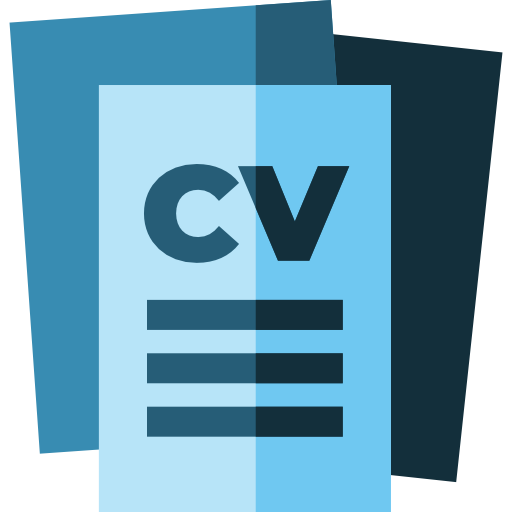دوره جامع Scrum
اسکرام یک فریمورک چابک است که برای مدیریت و تکمیل پروژههای پیچیده، به ویژه در توسعه نرمافزار استفاده میشود.
Scrum بر پیشرفت گام به گام از طریق چرخههای کوتاه و با زمانبندی به نام اسپرینت (sprint)، با تمرکز بر همکاری، انعطاف پذیری و بهبود مستمر تاکید میکند.
اسکرام شامل نقشهایی مانند مالک محصول، اسکرام، و تیم توسعه و اقداماتی مانند استندآپهای روزانه، بررسیهای سرعتی، و بررسیهای گذشته برای اطمینان از تحویل کارآمد پروژه است.
یادگیری اسکرام برای مهندسین نرمافزار بسیار مهم است زیرا به طور گسترده توسط سازمانها برای مدیریت پروژه چابک پذیرفته شده است و به تیم ها کمک میکند نرم افزار با کیفیت بالا را به شیوهای انعطافپذیر و سازگار ارائه دهند.
یک معلم خصوصی میتواند با ارائه درسهای ساختاریافته در مورد نقشها، مراسم (ceremonies) و مصنوعات اسکرام، و همچنین ارائه سناریوهای دنیای واقعی، روند یادگیری را تسریع بخشد و به فراگیران کمک کند تا بدانند چگونه اسکرام را به طور موثر در پروژههای خود پیادهسازی کنند و آنها را برای گواهینامههای اسکرام آماده کنند، که میتواند چشمانداز شغلی آنها را به میزان قابل توجهی افزایش دهد.
Chapter 1: Introduction to Scrum
- Lesson 1: What is Scrum?
- Lesson 2: History and Evolution of Scrum
- Lesson 3: Key Principles and Values of Scrum
- Lesson 4: Agile vs. Scrum: Understanding the Differences
- Lesson 5: Benefits and Challenges of Using Scrum
Chapter 2: Scrum Framework Overview
- Lesson 1: Scrum Roles, Artifacts, and Events
- Lesson 2: Understanding Iterative and Incremental Development
- Lesson 3: The Scrum Team: Developers, Scrum, and Product Owner
- Lesson 4: The Importance of Transparency, Inspection, and Adaptation
- Lesson 5: The Empirical Process Control in Scrum
Chapter 3: Scrum Team Structure and Responsibilities
- Lesson 1: Role of the Scrum
- Lesson 2: Role of the Product Owner
- Lesson 3: Role of Developers in Scrum
- Lesson 4: Collaboration Between Team Members
- Lesson 5: Cross-Functionality and Self-Organizing Teams
Chapter 4: Scrum Events and Their Significance
- Lesson 1: Sprint Planning: Purpose and Process
- Lesson 2: Daily Scrum: Conducting Effective Standups
- Lesson 3: Sprint Review: Inspecting the Increment
- Lesson 4: Sprint Retrospective: Continuous Improvement
- Lesson 5: Product Backlog Refinement: Keeping Work Organized
Chapter 5: Scrum Artifacts and Commitments
- Lesson 1: Understanding the Product Backlog
- Lesson 2: Sprint Backlog and Task Breakdown
- Lesson 3: The Increment and Definition of Done
- Lesson 4: Commitment to Transparency: Sprint Goal, Product Goal, and Definition of Done
- Lesson 5: Managing and Refining Scrum Artifacts
Chapter 6: Sprint Planning in Detail
- Lesson 1: Defining the Sprint Goal
- Lesson 2: Selecting and Refining Backlog Items for the Sprint
- Lesson 3: Estimating Effort and Capacity Planning
- Lesson 4: Task Breakdown and Assigning Work
- Lesson 5: Effective Sprint Planning Techniques
Chapter 7: Conducting Effective Daily Standups
- Lesson 1: The Three Key Questions of Daily Scrum
- Lesson 2: Facilitating Productive Daily Scrums
- Lesson 3: Common Pitfalls and How to Avoid Them
- Lesson 4: Handling Remote Standups for Distributed Teams
- Lesson 5: Using Scrum Boards and Tools for Daily Scrums
Chapter 8: Managing the Product Backlog
- Lesson 1: The Role of the Product Owner in Backlog Management
- Lesson 2: Writing Effective User Stories
- Lesson 3: Prioritization Techniques (MoSCoW, Kano, WSJF)
- Lesson 4: Keeping the Backlog Groomed and Organized
- Lesson 5: Handling Changing Requirements in Scrum
Chapter 9: Understanding Sprint Reviews
- Lesson 1: The Purpose and Goals of Sprint Review
- Lesson 2: Demonstrating Work Done to Stakeholders
- Lesson 3: Gathering and Incorporating Feedback
- Lesson 4: Making Data-Driven Decisions Post-Sprint Review
- Lesson 5: Common Mistakes in Sprint Reviews and How to Avoid Them
Chapter 10: Sprint Retrospectives and Continuous Improvement
- Lesson 1: Why Retrospectives Are Important
- Lesson 2: Common Retrospective Techniques (Starfish, Mad-Sad-Glad)
- Lesson 3: Identifying and Addressing Process Issues
- Lesson 4: Turning Feedback into Actionable Improvements
- Lesson 5: Using Retrospective Tools and Templates
Chapter 11: Definition of Done and Acceptance Criteria
- Lesson 1: What is the Definition of Done (DoD)?
- Lesson 2: Creating Clear and Measurable DoD
- Lesson 3: Difference Between DoD and Acceptance Criteria
- Lesson 4: Ensuring Quality with DoD in Agile Teams
- Lesson 5: Evolving DoD Over Time
Chapter 12: Scrum Metrics and Performance Measurement
- Lesson 1: Key Scrum Metrics (Velocity, Lead Time, Cycle Time)
- Lesson 2: Using Burndown and Burnup Charts
- Lesson 3: Measuring Team Performance and Productivity
- Lesson 4: Continuous Improvement Through Data-Driven Insights
- Lesson 5: Avoiding Misuse of Scrum Metrics
Chapter 13: Scaling Scrum for Large Organizations
- Lesson 1: Challenges of Scaling Scrum
- Lesson 2: Scrum of Scrums (SoS) Approach
- Lesson 3: Scaling Frameworks: SAFe, LeSS, Nexus
- Lesson 4: Managing Dependencies in Large-Scale Scrum
- Lesson 5: Scaling Agile Culture and Mindset
Chapter 14: Scrum in DevOps and Continuous Delivery
- Lesson 1: How Scrum Fits into DevOps Culture
- Lesson 2: Continuous Integration and Continuous Deployment (CI/CD)
- Lesson 3: Automated Testing in Agile Environments
- Lesson 4: Role of Scrum in Site Reliability Engineering (SRE)
- Lesson 5: Improving Time-to-Market with Scrum and DevOps
Chapter 15: Common Challenges in Scrum and How to Overcome Them
- Lesson 1: Handling Resistance to Scrum Adoption
- Lesson 2: Dealing with Unclear Requirements and Scope Creep
- Lesson 3: Conflict Resolution in Agile Teams
- Lesson 4: Coping with Team Turnover and Skill Gaps
- Lesson 5: Handling External Dependencies in Scrum
Chapter 16: Agile Leadership and Coaching in Scrum
- Lesson 1: The Role of Leadership in Scrum Teams
- Lesson 2: Servant Leadership and Its Importance
- Lesson 3: Coaching Agile Teams for High Performance
- Lesson 4: Emotional Intelligence in Agile Leadership
- Lesson 5: Driving Organizational Change with Agile
Chapter 17: New Features and Trends in Scrum
- Lesson 1: Recent Updates to the Scrum Guide
- Lesson 2: Evolution of Agile Beyond Scrum
- Lesson 3: AI and Automation in Agile Development
- Lesson 4: Remote and Hybrid Scrum Teams
- Lesson 5: The Future of Scrum and Agile Methodologies




